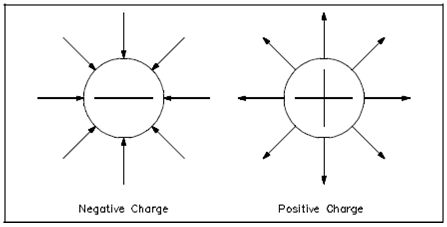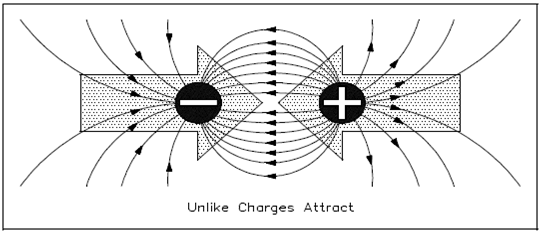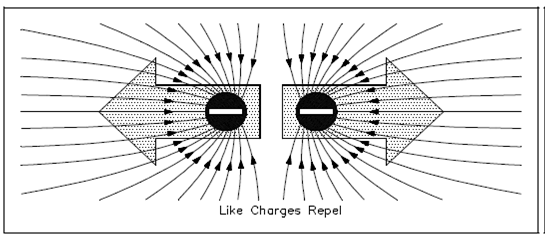Electrostatic Field:
A special force is acting among the charged objects discussed above. Forces of this category are the result of an electrostatic field which exists around every charged particle or object. That electrostatic field and the force it creates could be described along with lines known as "lines of force" as display in Figure.

Figure: Electrostatic Field
Charged objects repel or attract every other since of the way these fields act together. This force is present along with each charged object. Whenever two objects of opposite charge are brought close to one another, an electrostatic field is concentrated in the area among them, as display in Figure. A direction of the small arrows displays the direction of the force as it would act upon an electron if it were released into the electric field.

Figure: Electrostatic Field between Two Charges of Opposite Polarity
Whenever two objects of like charge are brought near one another, the lines of force repel each other, as display in Figure.

Figure Electrostatic Field between Two Charges of Like Polarity
The strength of the attraction or of the repulsion force depends on two factors: (1) the amount of charge on every object, and (2) the distance among the objects. The greater the charge on the objects, the greater the electrostatic field. The greater the distance among the objects, the weaker the electrostatic field among them, and vice versa. This leads us to the law of electrostatic attraction, generally referred to as Coulomb's Law of electrostatic charges that states in which the force of electrostatic attraction, or repulsion, is straightly proportional to the product of the two charges and inversely proportional to the square of the distance among them as display in Equation 1-1.
F=K(q1-q2/d2)
where
F = it denote force of electrostatic attraction or prepulsion (Newtons)
K = it denote constant of proportionality (Coulomb 2/N-m2)
q1 = charge of first particle (Coulombs)
q2 = charge of second particle (Coulombs)
d = distance between two particles (Meters)
The force is repulsive if q1 and q2 are both either positively or negatively charged. The force is attractive if q1 and q2 are opposite polarity or charge.